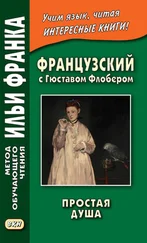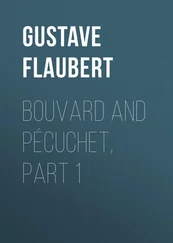After colours and oily substances came the turn of fermentation. This brought them to acids—and the law of equivalents once more confused them. They tried to elucidate it by means of the atomic theory, which fairly swamped them.
In Bouvard's opinion instruments would have been necessary to understand all this. The expense was very great, and they had incurred too much already. But, no doubt, Dr. Vaucorbeil could enlighten them.
They presented themselves during his consultation hours.
"I hear you, gentlemen. What is your ailment?"
Pécuchet replied that they were not patients, and, having stated the object of their visit:
"We want to understand, in the first place, the higher atomicity."
The physician got very red, then blamed them for being desirous to learn chemistry.
"I am not denying its importance, you may be sure; but really they are shoving it in everywhere! It exercises a deplorable influence on medicine."
And the authority of his language was strengthened by the appearance of his surroundings. Over the chimney–piece trailed some diachylum and strips for binding. In the middle of the desk stood the surgical case. A basin in a corner was full of probes, and close to the wall there was a representation of a human figure deprived of the skin.
Pécuchet complimented the doctor on it.
"It must be a lovely study, anatomy."
M. Vaucorbeil expatiated on the fascination he had formerly found in dissections; and Bouvard inquired what were the analogies between the interior of a woman and that of a man.
In order to satisfy him, the doctor fetched from his library a collection of anatomical plates.
"Take them with you! You can look at them more at your ease in your own house."
The skeleton astonished them by the prominence of the jawbone, the holes for the eyes, and the frightful length of the hands.
They stood in need of an explanatory work. They returned to M. Vaucorbeil's residence, and, thanks to the manual of Alexander Lauth, they learned the divisions of the frame, wondering at the backbone, sixteen times stronger, it is said, than if the Creator had made it straight (why sixteen times exactly?). The metacarpals drove Bouvard crazy; and Pécuchet, who was in a desperate state over the cranium, lost courage before the sphenoid, although it resembles a Turkish or "Turkesque" saddle.
As for the articulations, they were hidden under too many ligaments; so they attacked the muscles. But the insertions were not easily discovered; and when they came to the vertebral grooves they gave it up completely.
Then Pécuchet said:
"If we took up chemistry again, would not this be only utilising the laboratory?"
Bouvard protested, and he thought he had a recollection of artificial corpses being manufactured according to the custom of hot countries.
Barberou, with whom he communicated, gave him some information about the matter. For ten francs a month they could have one of the manikins of M. Auzoux; and the following week the carrier from Falaise deposited before their gate an oblong box.
Full of emotion, they carried it into the bakehouse. When the boards were unfastened, the straw fell down, the silver paper slipped off, and the anatomical figure made its appearance.
It was brick–coloured, without hair or skin, and variegated with innumerable strings, red, blue, and white. It did not look like a corpse, but rather like a kind of plaything, very ugly, very clean, and smelling of varnish.
They next took off the thorax; and they perceived the two lungs, like a pair of sponges, the heart like a big egg, slightly sidewise behind the diaphragm, the kidneys, the entire bundle of entrails.
"To work!" said Pécuchet. The day and the evening were spent at it. They had put blouses on, just as medical students do in the dissecting–rooms; and, by the light of three candles, they were working at their pieces of pasteboard, when a fist knocked at the door.
"Open!"
It was M. Foureau, followed by the keeper.
Germaine's masters were pleased to show him the manikin. She had rushed immediately to the grocer's shop to tell the thing, and the whole village now imagined that they had a real corpse concealed in their house. Foureau, yielding to the public clamour, had come to make sure about the fact. A number of persons, anxious for information, stood outside the porch.
When he entered, the manikin was lying on its side, and the muscles of the face, having been loosened, caused a monstrous protrusion, and looked frightful.
"What brings you here?" said Pécuchet.
Foureau stammered: "Nothing, nothing at all." And, taking up one of the pieces from the table, "What is this?"
"The buccinator," replied Bouvard.
Foureau said nothing, but smiled in a sly fashion, jealous of their having an amusement which he could not afford.
The two anatomists pretended to be pursuing their investigations. The people outside, getting bored with waiting, made their way into the bakehouse, and, as they began pushing one another a little, the table shook.
"Ah! this is too annoying," exclaimed Pécuchet. "Let us be rid of the public!"
The keeper made the busybodies take themselves off.
"Very well," said Bouvard; "we don't want anyone."
Foureau understood the allusion, and put it to them whether, not being medical men, they had the right to keep such an object in their possession. However, he was going to write to the prefect.
What a country district it was! There could be nothing more foolish, barbarous, and retrograde. The comparison which they instituted between themselves and the others consoled them—they felt a longing to suffer in the cause of science.
The doctor, too, came to see them. He disparaged the model as too far removed from nature, but took advantage of the occasion to give them a lecture.
Bouvard and Pécuchet were delighted; and at their request M. Vaucorbeil lent them several volumes out of his library, declaring at the same time that they would not reach the end of them. They took note of the cases of childbirth, longevity, obesity, and extraordinary constipation given in the Dictionary of Medical Sciences . Would that they had known the famous Canadian, De Beaumont, the polyphagi, Tarare and Bijou, the dropsical woman from the department of Eure, the Piedmontese who went every twenty days to the water–closet, Simon de Mirepoix, who was ossified at the time of his death, and that ancient mayor of Angoulême whose nose weighed three pounds!
The brain inspired them with philosophic reflections. They easily distinguished in the interior of it the septum lucidum , composed of two lamellæ, and the pineal gland, which is like a little red pea. But there were peduncles and ventricles, arches, columns, strata, ganglions, and fibres of all kinds, and the foramen of Pacchioni and the "body" of Paccini; in short, an inextricable mass of details, enough to wear their lives out.
Sometimes, in a fit of dizziness, they would take the figure completely to pieces, then would get perplexed about putting back each part in its proper place. This was troublesome work, especially after breakfast, and it was not long before they were both asleep, Bouvard with drooping chin and protruding stomach, and Pécuchet with his hands over his head and both elbows on the table.
Often at that moment M. Vaucorbeil, having finished his morning rounds, would open the door.
"Well, comrades, how goes anatomy?"
"Splendidly," they would answer.
Then he would put questions to them, for the pleasure of confusing them.
When they were tired of one organ they went on to another, in this way taking up and then throwing aside the heart, the stomach, the ear, the intestines; for the pasteboard manikin bored them to death, despite their efforts to become interested in him. At last the doctor came on them suddenly, just as they were nailing him up again in his box.
Читать дальше
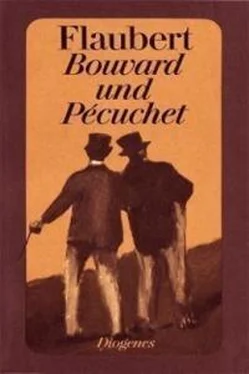
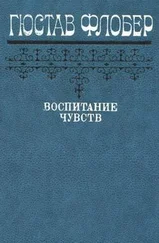


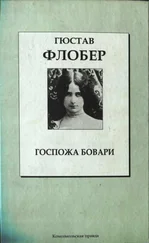
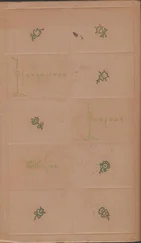

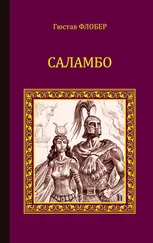
![Гюстав Флобер - Закат Карфагена [Сборник]](/books/414440/gyustav-flober-zakat-karfagena-sbornik-thumb.webp)
